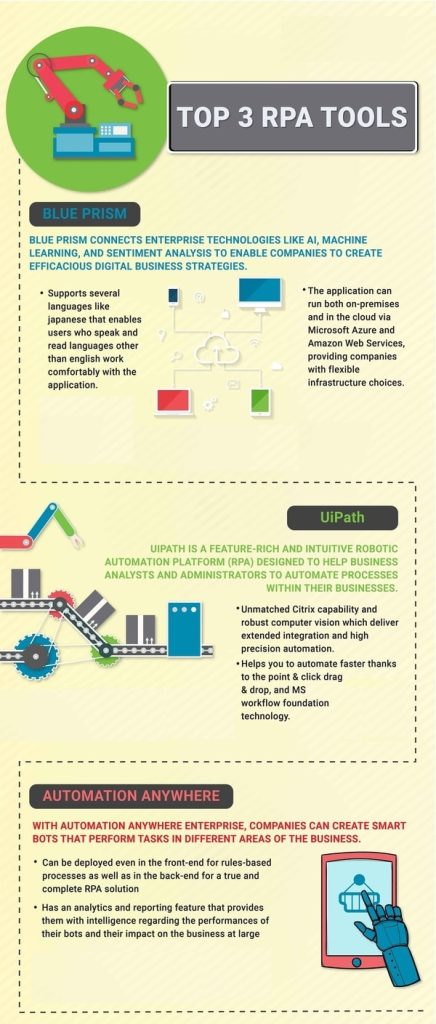

Tarun Tripathi
September 17, 2018
2 Minutes read
Top RPA Tools and Comparison
RPA is an application of technology, directed by business logic and structured inputs, aimed at automating business processes and to implement RPA we need RPA Tools. Here the list of top three RPA tools.
1. Blue Prism
Blue Prism connects enterprise technologies like Artificial Intelligence (AI) and Machine Learning, and sentiment analysis to enable companies to create efficacious digital business strategies.
- Supports several languages like Japanese that enables users who speak and read languages other than english can work comfortably with the application.
- The application can run both on-premises and in the cloud via Microsoft Azure and Amazon Web Services, providing companies with flexible infrastructure choices.
2. UiPath
UiPath is a feature-rich and intuitive robotic automation platform(RPA) designed to help business analysts and administrators to automate processes within their businesses.
- Unmatched Citrix capability and robust computer vision which deliver extended integration and high precision automation.
- Helps you to automate faster thanks to the point and click drag & drop, and MS workflow foundation technology.
3. Automation Anywhere
With automation anywhere enterprise, companies can create smart bots that perform tasks in different areas of the business.
- Can be deployed even in the front-end for rules-based processes as well as in the back-end for a true and complete RPA solution.
- Has an analytics and reporting feature that provides them with intelligence regarding the performances of their bots and their impact on the business at large.

Related Insights


Blue Prism Automation Tool
Tarun Tripathi
